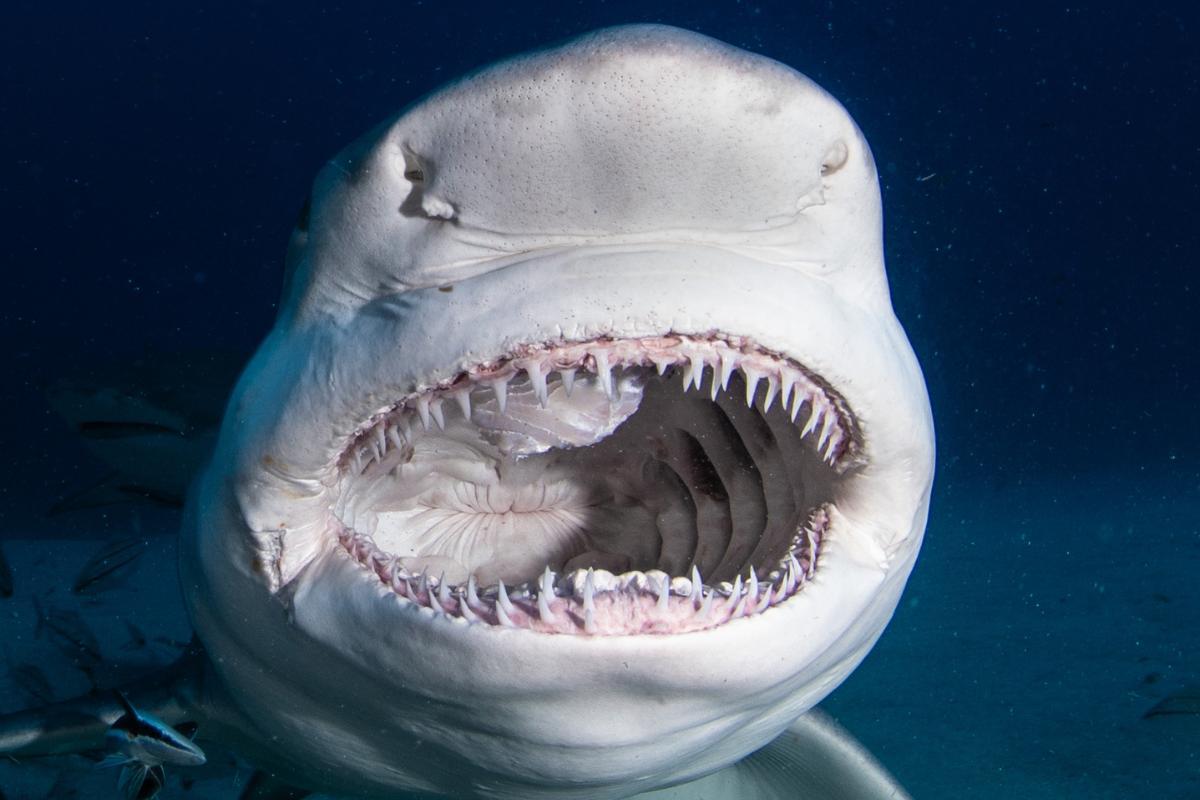How Does a Shark’s Tongue Work?


Sharks are one of the largest and most feared predatory animals in the world. But do they have a tongue? At first glance, it might seem like sharks don't have tongues. Their mouths are full of sharp teeth, and their tongue doesn't appear to be very mobile. But the truth is, sharks do have tongues. They're just different from human tongues.
In this AnimalWised article, we'll explore the tongues of sharks. Additionally, we will learn how they differ from human tongues in terms of their structure, function, and how they work.
Do sharks have tongues?
Sharks do not have tongues in the same way humans do. While humans have tongues that help us taste food, sharks have a different structure called the basihyal. The basihyal is a small, tongue-like structure made of cartilage. It is located on the floor of the mouth, between the lower jaw and the gill arches.
The basihyal has a few important functions in sharks. First, it provides support and reinforcement for the jaw muscles. This is essential for sharks to be able to capture, bite, and tear apart prey.
Second, the basihyal helps with swallowing. It can be used to push food back into the throat, especially if it is large or difficult to swallow. Finally, the basihyal may also play a role in taste. It has taste buds on its surface, which can help sharks to detect different flavors in the water.
Sharks have evolved the basihyal to suit their predatory lifestyle in the aquatic environment. Instead of using a muscular tongue for chewing food, they rely on their sharp teeth and powerful jaws to capture, tear, and consume prey either whole or in large pieces.
Did you know that sharks can have up to 3,000 teeth in their lifetime? To learn more about the different types of shark teeth and how many teeth sharks have, be sure to read our other article.
What is the structure of the basihyal in sharks?
The basihyal is a specialized structure found in the mouths of most shark species.
Unlike the soft, muscular tongue found in humans and many other animals, the basihyal is a rigid, cartilaginous structure. It lacks the flexibility and mobility of a typical tongue. It is located on the floor of the mouth, between the lower jaw and the gill arches.
The basihyal is immobile and firmly attached to the floor of the shark's mouth. It does not have the range of motion that a muscular tongue provides. The basihyal is attached to the lower jaw by ligaments and muscles. It also has attachments to the gill arches and the hyoid apparatus.
One fascinating aspect of the basihyal is its adaptability. Different shark species have evolved variations in the size and shape of their basihyals. These variations are often related to the shark's feeding habits and the type of prey it consumes. For example, species that hunt larger prey may have more substantial and durable basihyals, while those that feed on smaller prey may have smaller and thinner structures.
Sharks are apex predators and have a unique body structure that helps them move efficiently through the water. To learn more about the different types of shark fins and how many fins sharks have, be sure to read our other article.

What is the function of the basihyal in sharks?
The basihyal of sharks serves several important functions related to their feeding and survival in their aquatic environment.
One of the primary functions of the basihyal is to provide support and reinforcement for the jaw muscles. Sharks have powerful jaws that they use to capture and manipulate prey. The basihyal helps stabilize the jaws during these actions, allowing for the exertion of significant force when biting and tearing prey.
The rigidity of the basihyal helps maintain the structural integrity of the mouth. Sharks often feed on a variety of prey, including large fish and marine mammals. The basihyal's support is crucial in preventing the mouth from collapsing or becoming deformed while capturing and consuming prey.
While sharks lack the muscular tongues found in terrestrial animals like humans, the basihyal assists in moving food to the back of the mouth for swallowing. It acts as a functional aid in the feeding process by helping with prey manipulation within the mouth.
Sharks are fascinating creatures that have been around for millions of years. But how do they reproduce? To learn more about the three main types of shark reproduction, be sure to read our other article.
Do sharks have taste buds?
Yes, sharks do have taste buds, but they're not where you might expect. Instead of being concentrated on their tongue, shark taste buds are located all around their mouths, including in their gums and along their teeth.
Shark taste buds are relatively simple compared to human taste buds, but they're still effective at detecting basic tastes like salty and bitter. This helps sharks to find and select food sources, as well as to avoid dangerous or poisonous substances.
How do shark taste buds work?
Shark taste buds consist of specialized cells capable of sensing various chemicals in the water. When a shark consumes food, these cells transmit signals to the shark's brain. Subsequently, the brain interprets these signals to discern the taste of the ingested food.
Did you know that some sharks can grow to be over 40 feet long? To learn more about the 10 largest sharks in the world, be sure to read our other article.
- González, CG (2013). Sharks, Rays, Chimeras, Lampreys and Hagfish of the Iberian Peninsula and the Canary Islands . Díaz de Santos Editions.
- Astudillo Gajardo, M., Morales Muñoz, P., & Valenzuela, ME (2015). Anatomical Description of the Mako Shark Skeleton (Isurus oxyrinchus) . International Journal of Morphology, 33(4), 1231-1236.
If you want to read similar articles to How Does a Shark’s Tongue Work?, we recommend you visit our Facts about the animal kingdom category.






